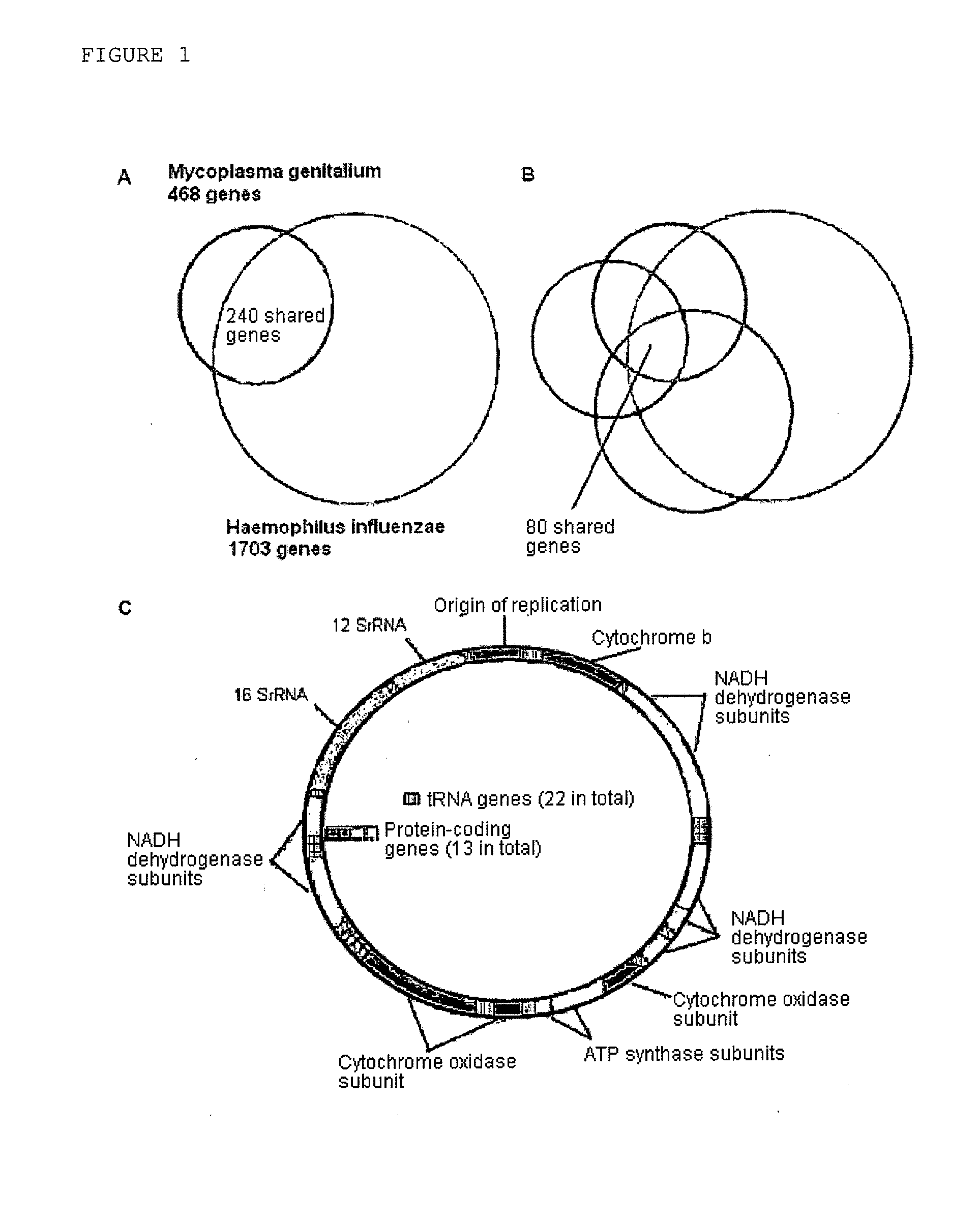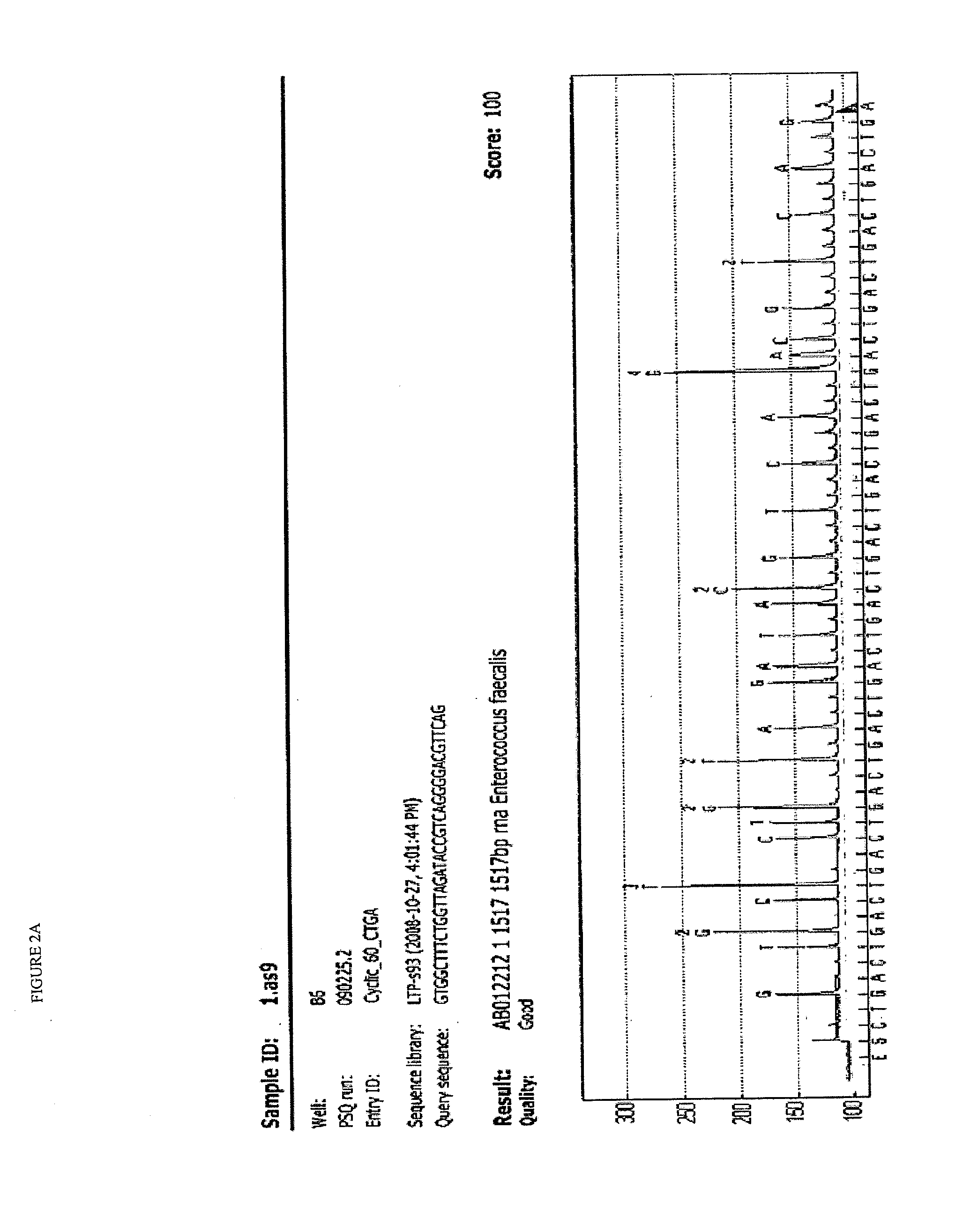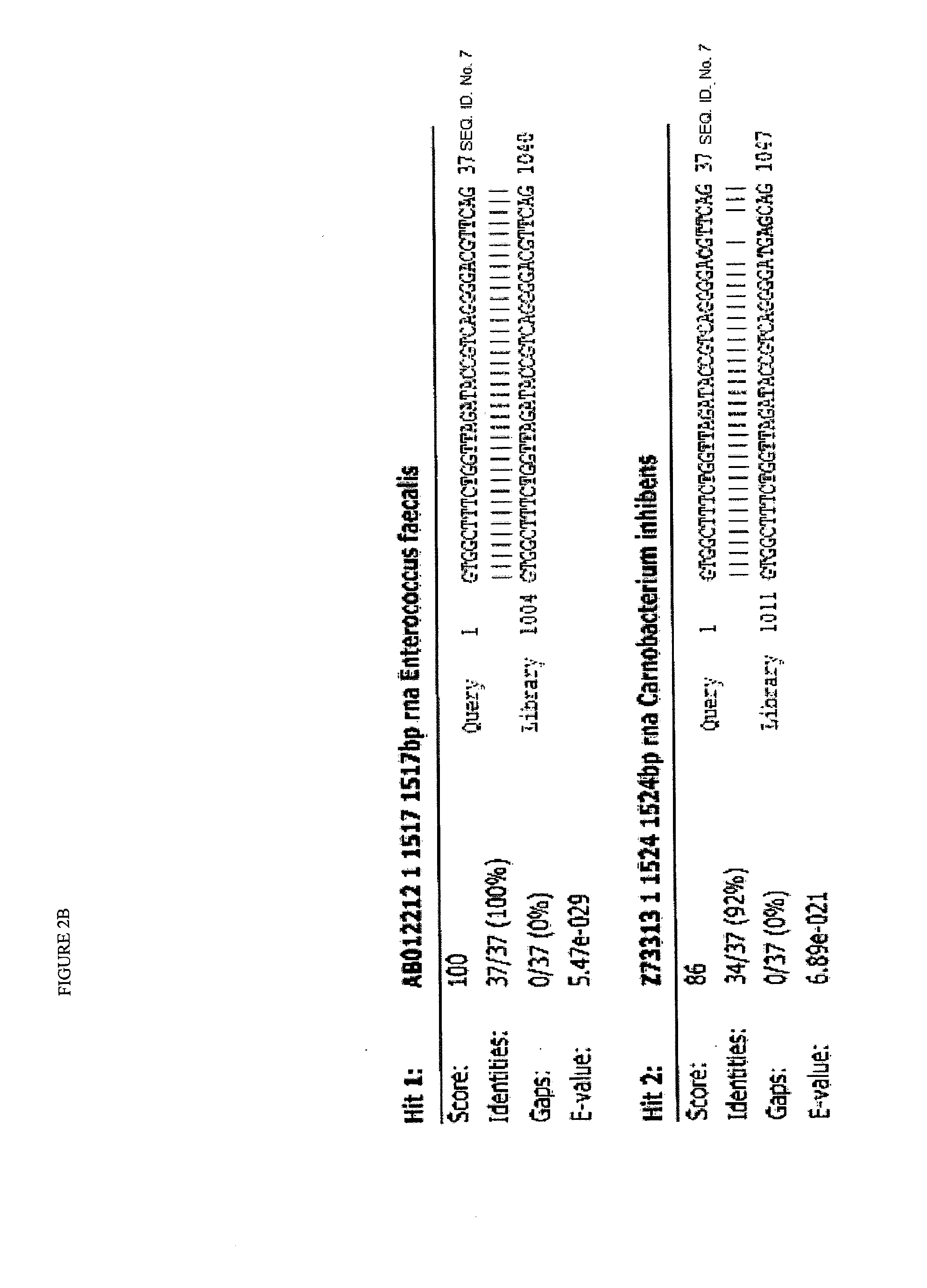Composition, method and kit for detecting bacteria by means of sequencing
a technology of sequencing and bacteria, applied in the field of composition, method and kit for detecting bacteria by means of sequencing, can solve the problems of deterioration rapidity, drawback of taking between one and five days to give a precise, and potentially fatal condition in people with impaired immune system, so as to improve the performance of resolution capacity, improve the resolution of pyrosequencing, and improve discrimination
- Summary
- Abstract
- Description
- Claims
- Application Information
AI Technical Summary
Benefits of technology
Problems solved by technology
Method used
Image
Examples
example 1
[0075]The original blood sample was taken in the Microbiology Department of Hospital Universitario La Paz in a standard ward blood extraction format by intravenous route. The set of clinical symptoms presented by the patient required an exact identification of the pathogen because it did not allow defining the origin or progress, being subjected to prophylactic antibiotic treatment according to standard practice for diagnosed but non-characterized infections. One milliliter (1 ml) of the blood sample was inoculated into a standard hemoculture for sample enrichment, taking 7 h to generate a positive result for microbial growth by incubation at 37° C. Two drops of the hemoculture were deposited on the GenoCard® system (Hain Lifescience) for the immobilization of samples from hemoculture, being adsorbed on the surface of the perforated card. Using a punch, six perforations were made to extract six pieces of adsorbed surface, which were immediately transferred to a multiwell plate at a ...
example 2
[0079]The original sample was taken in the Microbiology Department of Hospital Universitario La Paz in a standard ward blood extraction format by intravenous route. The set of clinical symptoms presented by the patient required an exact identification of the pathogen because it did not allow defining the origin or progress, being subjected to prophylactic antibiotic treatment according to practice for diagnosed but non-characterized infections. A possible set of polymicrobial clinical symptoms is suspected. One milliliter (1 ml) of the blood sample was inoculated into a standard hemoculture for sample enrichment, taking 7 h to generate the positive result for microbial growth by incubation at 37° C. Two drops of the hemoculture were deposited on the GenoCard® system (Hain Lifescience) for the immobilization of samples from hemoculture, being adsorbed on the surface of the perforated card. Using a punch, six perforations were made to extract six pieces of adsorbed surface, which were...
example 3
[0083]To show the enhancing effect of the pyrosequencing reaction of the mixture used for stabilization of the amplification reaction mixture (trehalose, melezitose, lysine and glycogen) by means of gelling, three blood samples were taken on the same day, and each of them was subjected to hemoculture. The three hemocultures generated a positive value in the incubator after eight hours and they were sub-cultured in non-selective agar-blood plates for counting colony forming units (CFUs).
[0084]The three produced a result in the same order of dilution, so the count indicates an initial concentration in the same order of magnitude used to start and very similar after enrichment. The determination of the range of concentration of the three assayed samples was carried out by seeding dilutions up to a value of 10−9 in plates containing Mueller-Hinton agar (5% blood) and incubating at 37° C. for 18 h. The bacterial concentration was adjusted to the colony count in the plate corresponding to...
PUM
| Property | Measurement | Unit |
|---|---|---|
| Temperature | aaaaa | aaaaa |
| Temperature | aaaaa | aaaaa |
| Temperature | aaaaa | aaaaa |
Abstract
Description
Claims
Application Information
 Login to View More
Login to View More - R&D
- Intellectual Property
- Life Sciences
- Materials
- Tech Scout
- Unparalleled Data Quality
- Higher Quality Content
- 60% Fewer Hallucinations
Browse by: Latest US Patents, China's latest patents, Technical Efficacy Thesaurus, Application Domain, Technology Topic, Popular Technical Reports.
© 2025 PatSnap. All rights reserved.Legal|Privacy policy|Modern Slavery Act Transparency Statement|Sitemap|About US| Contact US: help@patsnap.com



